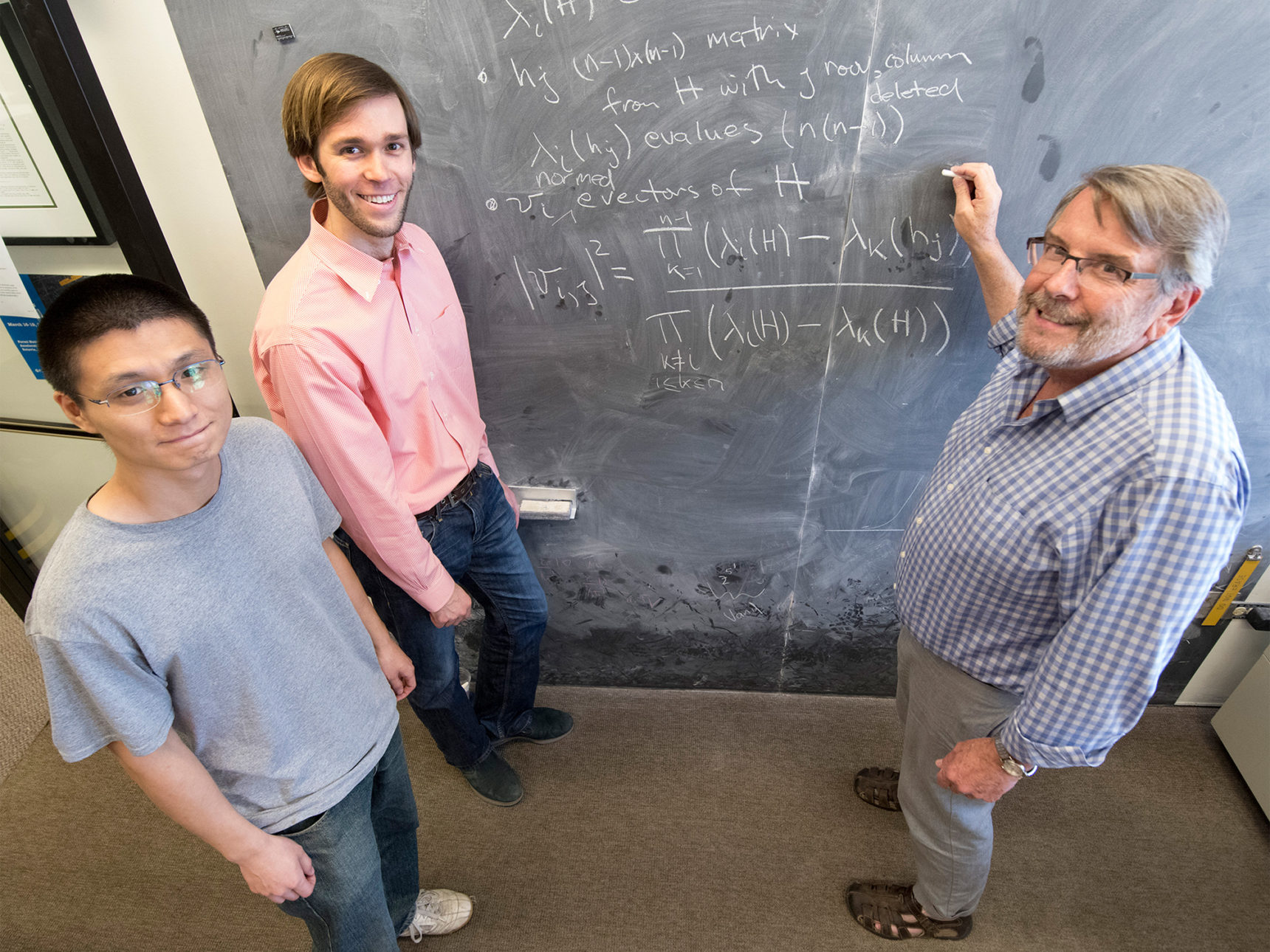
Physicists — Stephen Parke of Fermi National Accelerator Laboratory, Xining Zhang of the University of Chicago and Peter Denton of Brookhaven National Laboratory — while grappling with the strange behavior of particles called neutrinos, noticed that hard-to-compute terms called “eigenvectors,” describing, in this case, the ways that neutrinos propagate through matter, were equal to combinations of terms called “eigenvalues,” which are far easier to compute. Moreover, they realized that the relationship between eigenvectors and eigenvalues seemed to hold more generally.
Eigenvectors and eigenvalues are ubiquitous because they characterize linear transformations. Eigenvectors and eigenvalues are independent, and normally they must be calculated separately starting from the rows and columns of the matrix itself. The discovered identity applies to “Hermitian” matrices, which transform eigenvectors by real amounts (as opposed to those that involve imaginary numbers), and which thus apply in real-world situations. The formula expresses each eigenvector of a Hermitian matrix in terms of the matrix’s eigenvalues and those of the “minor matrix,” a smaller matrix formed by deleting a row and column of the original one.
Why neutrinos? Neutrinos come in one of three possible “flavors” — electron, muon or tau — a quantum mechanical mixture. Neutrinos oscillate between these flavors, with a behaviors described by a complicated three-by-three matrix. From the eigenvectors and eigenvalues, physicists can calculate an expression for the likelihood that a muon neutrino will oscillate into an electron neutrino. They can also calculate an expression for the probability that a muon antineutrino will become an electron antineutrino. Thanks to this new identity, neutrino oscillations in matter can be computed faster and simpler. (Quantamagazine)
